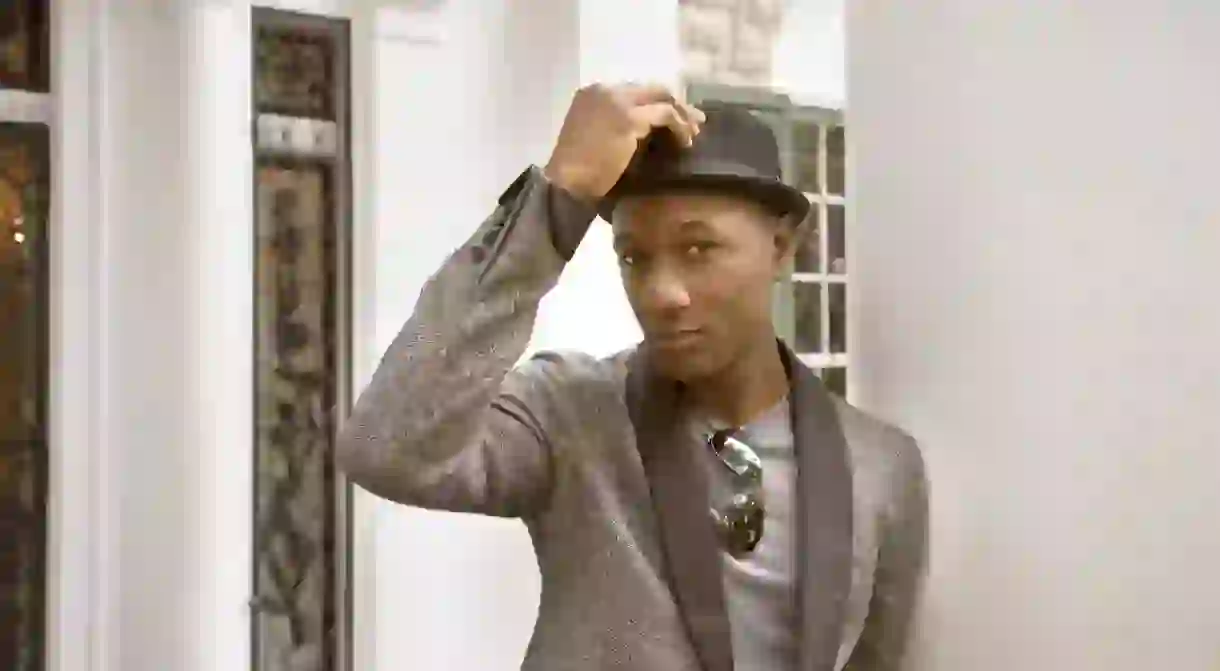America’s Musical Journey: An Interview With Singer-Songwriter Aloe Blacc

The rich cultural diversity of the US – and how it has shaped the music we listen to today – is the underlying theme of America’s Musical Journey (2018), one of the latest 3D IMAX movies to hit theaters worldwide.
Starring Grammy-nominated singer-songwriter Aloe Blacc (“Brooklyn In the Summer,” Avicii’s “Wake Me Up”) and narrated by Academy Award-winning actor Morgan Freeman, the film takes viewers on a musical expedition across ten iconic US cities including New Orleans, Chicago, Detroit, New York City and Nashville, introducing the visionaries, artists, music makers and innovators who have molded America’s culture.
Blacc sat down with Culture Trip to discuss his musical journey across the country, as well as how music offers unique insight into a place’s past and people.

Culture Trip: What made you want to be a part of America’s Musical Journey?
Aloe Blacc: Well, I love music – obviously, it’s part of my career – and this was a great opportunity to explore the roots of American music and at the same time learn more about the cities that I’ve traveled to before but never had the opportunity to spend time in. As a touring artist, you get to spend maybe a night in a city. This gave me the opportunity to spend a lot more time in each place.
And you were able to travel to just about every region of the country, correct?
Yes. We put together a tour that was based on cities where different genres of music were born. We wanted to touch upon soul music, rock music, country, pop, blues and jazz. So, we found the cities where these genres were born, and these are the cities we decided to visit.
Was there any particular place that had an especially profound effect on you as a musician?
New Orleans is a phenomenal city, full of energy and life, music and culture. It’s the birthplace of jazz, and jazz was very influential in the creation of genres that are important in my life. There are several figures in the jazz world that have inspired me to do what I do, one of whom we showcase in the film is Louis Armstrong, who became the ambassador of jazz music to the world.
I also had the chance to spend time with New Orleans natives like Dr. John and Jon Batiste, who showed me around and told me about the city’s history. I was lucky – I got the royal treatment!

In addition to history, what else can we learn about a place through its music?
Through music, you can get a sense of whether a place’s people are extroverted or introverted. The grunge music that came out of Seattle and the Pacific Northwest isn’t the same as the Miami Sound Machine that came out of the Southeast. The energy is different; the presentation is different. There’s a different character and personality going on there.
Take rock and blues. Even though rock is a derivative of blues, there’s a different character. Blues is more laid-back and relaxed and contemplative, where rock is more expressive and deliberate. And I think that with those kinds of things, you get a sense of the people from the sound and style of music.
You talk about the differences in the musical styles of each region of the country, but did you notice any similarities in any of these cities and their music?
There is a similarity in that music is the common thread – it binds us all. It helps us to experience and celebrate our happy times. It helps us to be comforted in our sad times. And every city uses music as a form of communal communication. It’s hard to find a place where people aren’t entertaining themselves with music.

Many musical genres that were created in America were born during the darker moments of the country’s history as a response to the atrocities of those times. In this way, it seems that music can paint a picture of our past in addition to our contemporary culture.
It does, and we explore that in the film. American music is a representation of the immigrant story. And whether it was voluntary immigration or forced immigration, for whatever the reason why people came to the US, they brought their culture and their music with them, and those musical styles have combined in remarkable ways.
You wrote a song called “My Story” that was inspired by your journey across the country. Do you think that your experiences while making this film will continue to influence your music going forward?
I certainly feel like doing this has given me the motivation to learn more about the musical histories of the cities that I visited. And I imagine that that will influence the music that I make. I’m always inspired by music of the past; I spend a lot of time listening to music that’s pre-1970s. And getting into the depth of a city and the music that was born there will definitely inspire me going forward.

Are there any other music cities that you didn’t visit while filming, but would like to go back to and explore in more depth?
We didn’t touch on funk, and there was a lot of funk that came out the Midwest. We went to Detroit for soul music. But Ohio and Minnesota would be a couple of places that I’d like to visit to explore funk.
What do you hope that audiences will take away from America’s Musical Journey?
I hope audiences find their own reasons to visit the cities that I visited. And that they find something special about them in the music they are representative of. I think that everyone has something to offer, whether they sing, play an instrument or dance. So I hope that they find their own musical voice, some way to express themselves.













